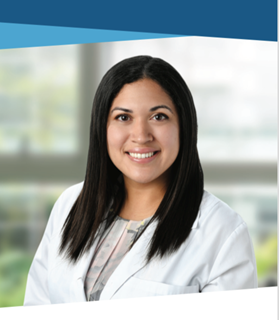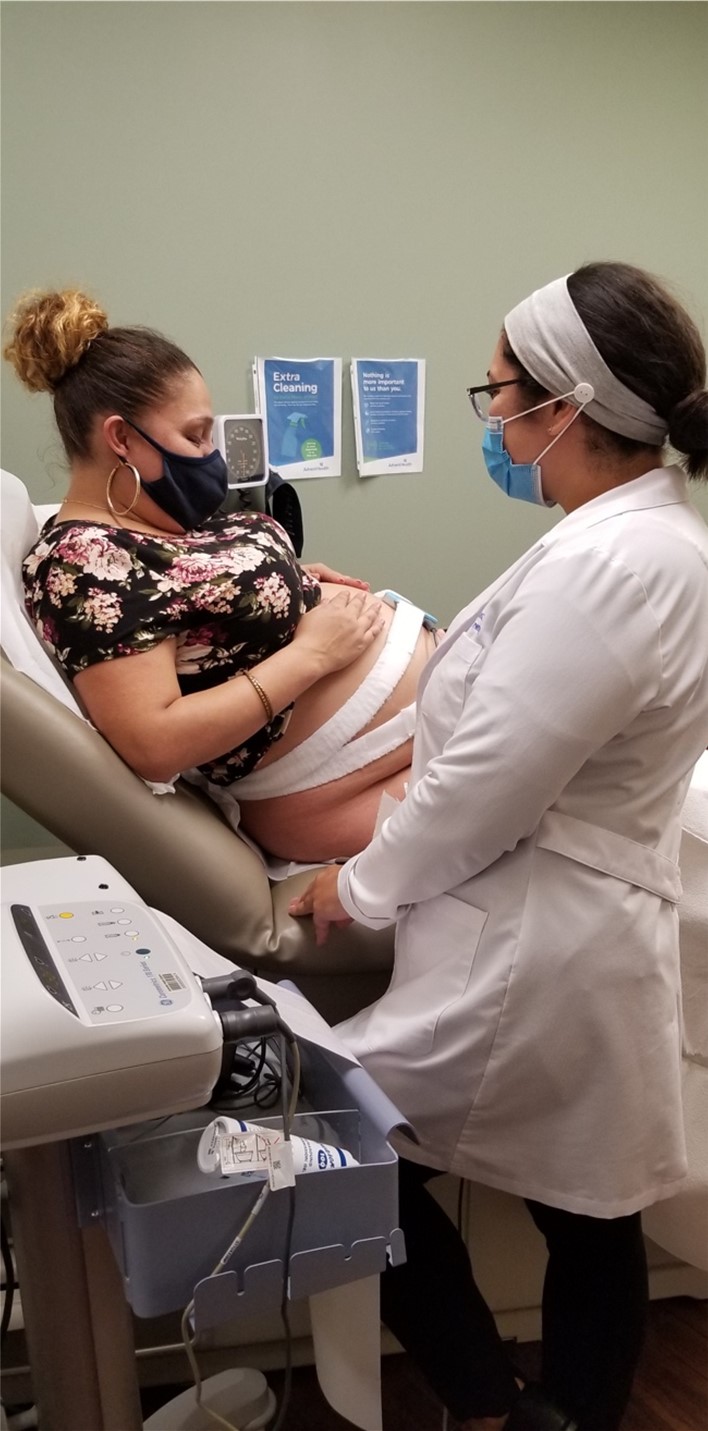PAs: Obstetrics and Gynecology Needs You!
PAs Work in all Primary Care, Specialty, and Subspecialty Areas
August 3, 2021
By Melissa Rodriguez, DMSc, PA-C

Melissa Rodriguez, DMSc, PA-C, president of the Association of Physician Assistants in OB-GYN, responds to questions regarding PA practice in obstetrics and gynecology (OB-GYN).
Q: Do PAs practice in OB-GYN?
A: Yes, we do—currently, fewer than 2% of all PAs practice in the field of OB-GYN and its subspecialties. PAs also practice women’s health in other specialties such as family medicine.
Q: Are PAs adequately trained to practice in OB-GYN?
A: Absolutely! PA training provides a generalist foundation for their students, which includes mandatory training in obstetrics and gynecology. PA students take more than 75 hours in pharmacology, 175 hours in behavioral sciences, more than 400 hours in basic sciences, and 580 hours in clinical medicine. Training specific to OB-GYN includes hours of didactic training in benign and complex topics of women’s health; clinical lab experience with live models, simulation, and breast and pelvic trainers; and on average, 162 hours of hands-on clinical experience during the women’s health rotation. Most clinical rotation sites provide opportunities to participate in vaginal deliveries, cesarean sections, and gynecological surgeries. Understandably, there is a shortage in OB-GYN rotation sites which means that not all experiences are complete. The need for PAs in OB-GYN has exacerbated this lack of preceptors for PA students, and the competition with medical students and nursing students is intense.
[Learn more about the OB-GYN opportunities for PAs]
Q: Is additional training or certification necessary to practice in OB-GYN?
A: No, it is not. We train for OB-GYN during didactic and clinical phases, and we are board-certified to practice medicine by the NCCPA examination, which includes OB-GYN. Postgraduate programs prepare PAs to practice at their full scope of practice during that one year of training, and include training in obstetrics, gynecology, and its subspecialties.

Q: What are some of the roles PAs fill in this field?
A: PAs work in all primary care, specialty, and subspecialty areas, including labor and delivery, maternal-fetal medicine, minimally invasive surgery, gynecology surgery, gynecology oncology, reproductive endocrinology, and infertility and urogynecology.
Q: What are the benefits of utilizing PAs in OB-GYN?
A: The most known benefit is the team-oriented, compassionate care provided by PAs. They are also medically trained in anatomy, physiology, pathology, pharmacology, microbiology, genetics, and clinical medicine. Clinically, PAs identify risk in all populations and provide equitable care. From a business lens, there are financial benefits as well. A physician shortage is looming, and the American College of Obstetrics and Gynecology (ACOG) predicts a shortage of up to 22,000 by 20501 (AJMC, 2019). There is also a known overwhelming presence of physician burnout in OB-GYN – twice the rate of other working adults, an estimated 40-75% of OB-GYNs experience some form of professional burnout2. Physicians suffer from an imbalance in work and life because they are expected to hold office hours, be present for deliveries, attend answering service calls at all hours of the day and night, perform gynecological surgeries, round on patients, and still make time for themselves. The exhaustion and frustration of daily practice has only increased physician dissatisfaction. Malpractice in this field is also a considerable burden, especially when our goal is always a healthy mom and healthy baby, regardless of history or health condition. So, what can PAs do? We can reduce the burden to physicians by providing medically oriented whole-person care to our patients. We can identify high-risk situations, assist with surgical management, understand the pathophysiology of disease processes, and lessen the load on physicians. We value communication, teamwork, and compassion. While a vaginal delivery can occur without assistance, we love educating our patients on the most effective techniques, providing reassurance during their most vulnerable time, and ensuring that they are safe during the entire process.
[Receive unparalleled career services and support – join or renew your membership today]
Q: Why is it important to highlight the benefits of PAs practicing in OB-GYN?
A: The United States has a crisis in maternal mortality. We are losing over 700 women per year due to pregnancy-induced problems. It is evident that the status quo is lacking, and I firmly believe PAs are the answer. We are medically trained, compassionate, team-oriented, and are qualified to identify, prevent, and treat most, if not all, causes of maternal mortality. Situations like hypertension, preeclampsia, stroke, venous thromboembolism, hemorrhage, and cardiac disorders are part of our core knowledge that we recertify every 10 years. With the increasing age of childbirth and the complications such as obesity, hypertension, and others, it is vital to have a well-trained medical professional to address this current disparity in care.
Q: What is the typical day in the life of a PA in labor and delivery?
A: The most beautiful part of obstetrics is the variety it offers. Every day, every hour, is different. In my role, I would start my shift at 6 a.m. and round on my assigned postpartum and antepartum patients. Then, I would present to labor and delivery (L&D) for a full “sign-out” from the night shift and a patient safety huddle. Next, we would assess the need. If patients in triage needed evaluation, we would attend to them first. If the labor floor patients needed updates or management, then we would care for them. It was essential to work with our teammates and delegate as needed. The first scheduled cesarean delivery was usually at 8 a.m., and the assigned team member would prepare them for surgery and first assist. If, however, there was an emergency cesarean that had to happen simultaneously, we would fill that role as well. Vaginal deliveries and cesarean sections took priority due to their urgent nature, but we responded to all matters. Our proficiency is utilized most in identifying risk factors for all our pregnant and postpartum patients. We are trained in general medicine and surgery and use our knowledge to correctly identify risk factors for cardiac disease, venous thromboembolism, hypertension, stroke, and hemorrhage. It is essential to treat each patient as a whole and not just a pregnancy.
References:
1 Rosenberg, Jaime (Sept 21, 2019). Physician Shortage Likely to Impact OBGYN Workforce in Coming Years. Retrieved from https://www.ajmc.com/view/physician-shortage-likely-to-impact-obgyn-workforce-in-coming-years
2 Why ob-gyns are burning out. ACOG. Retrieved from
https://www.acog.org/news/news-articles/2019/10/why-ob-gyns-are-burning-out
Melissa Rodriguez, DMSc, PA-C, is a PA in women’s health at AdventHealth Celebration, Orlando, Florida, and adjunct faculty at AdventHealth University. Previously, she worked for NYU Langone Hospital in Brooklyn and Mount Sinai Health System in New York, New York. She serves as president of the Association of Physician Assistants in OBGYN. Contact her at [email protected].
You May Also Like
A Day in the Life of a PA in Hospital Internal Medicine
Insider Perspective from a PA in Family Medicine
Health Inequities: How PAs Can Help Bridge the Care Gap
Thank you for reading AAPA’s News Central
You have 2 articles left this month. Create a free account to read more stories, or become a member for more access to exclusive benefits! Already have an account? Log in.



